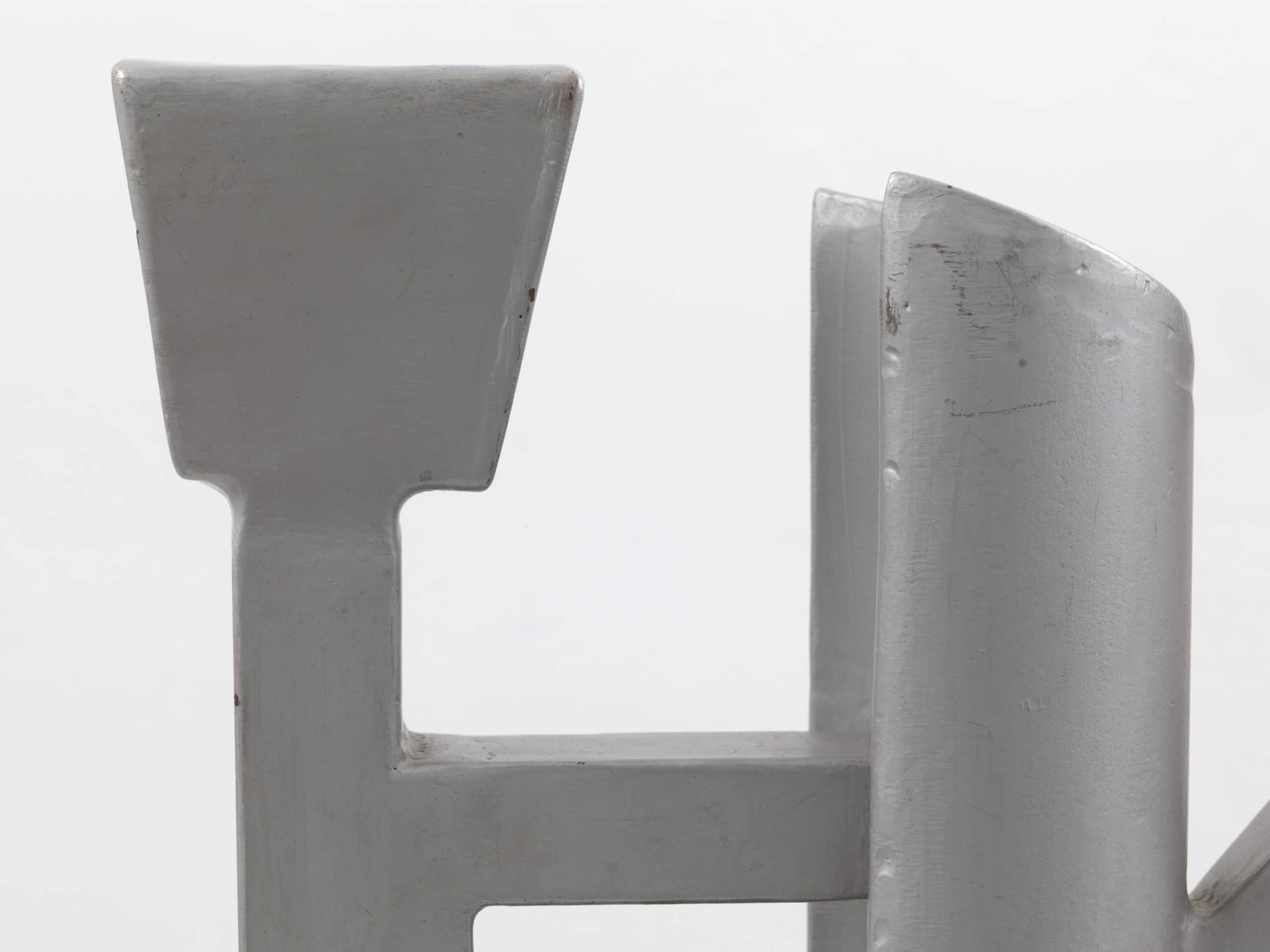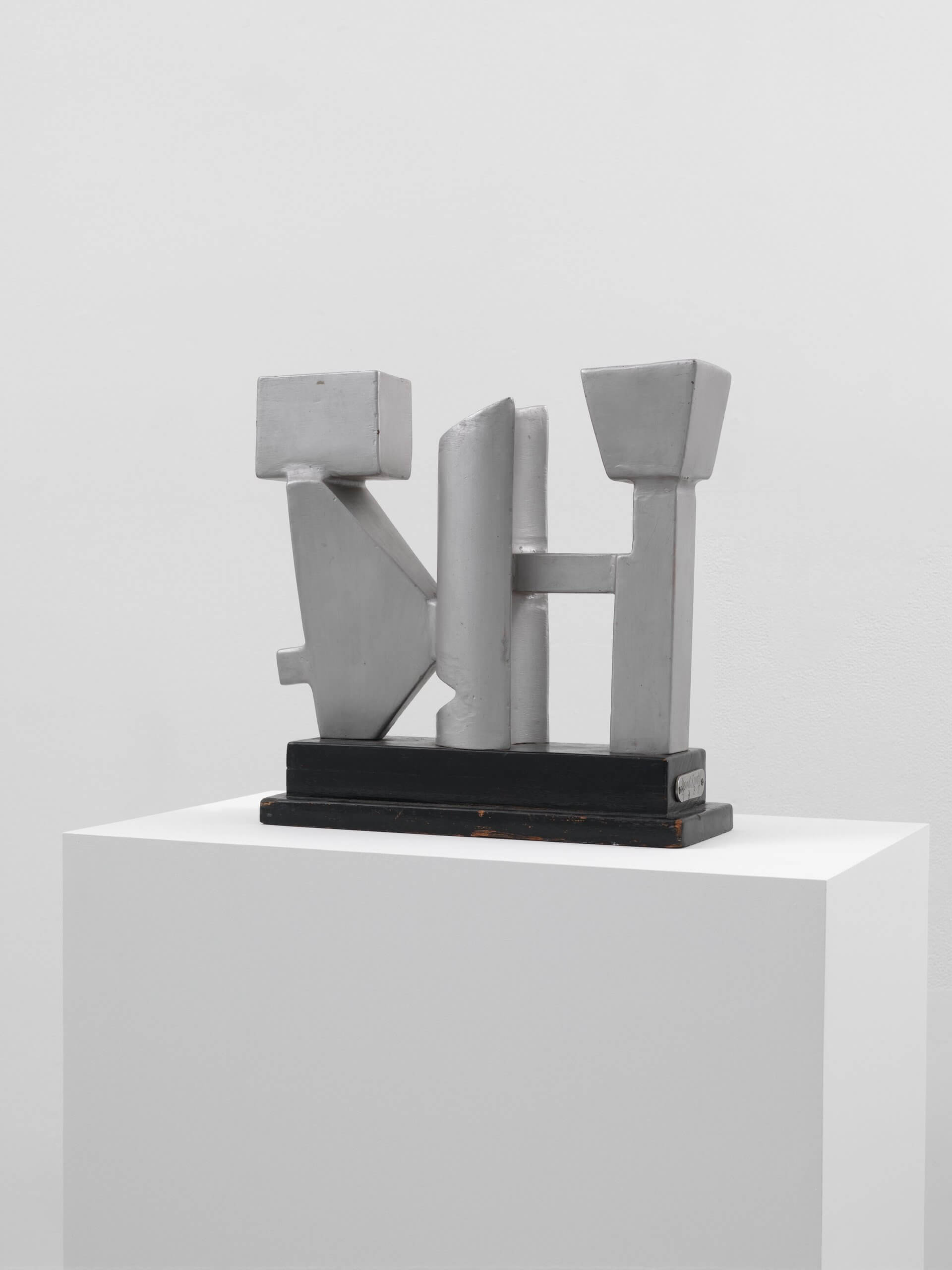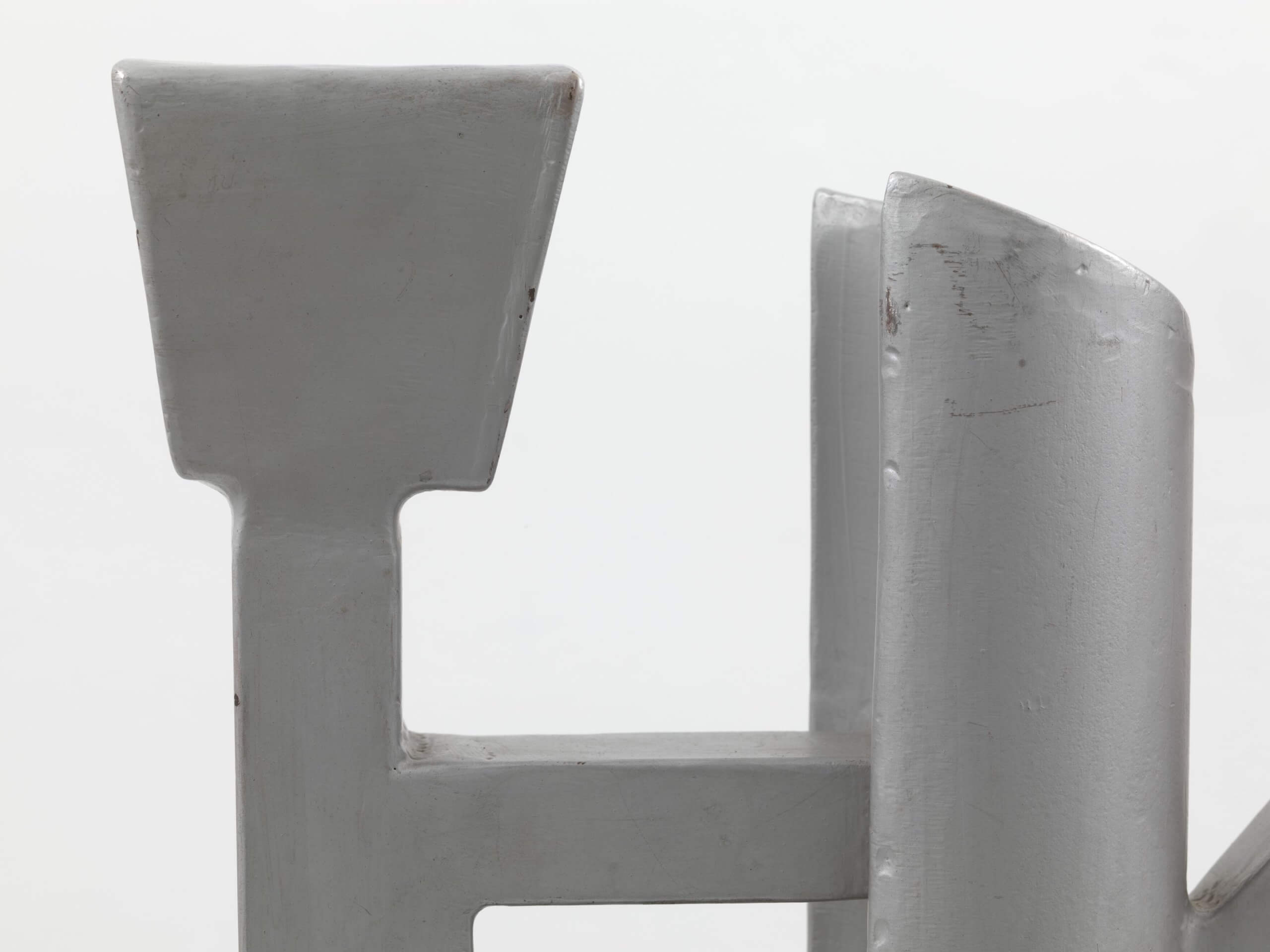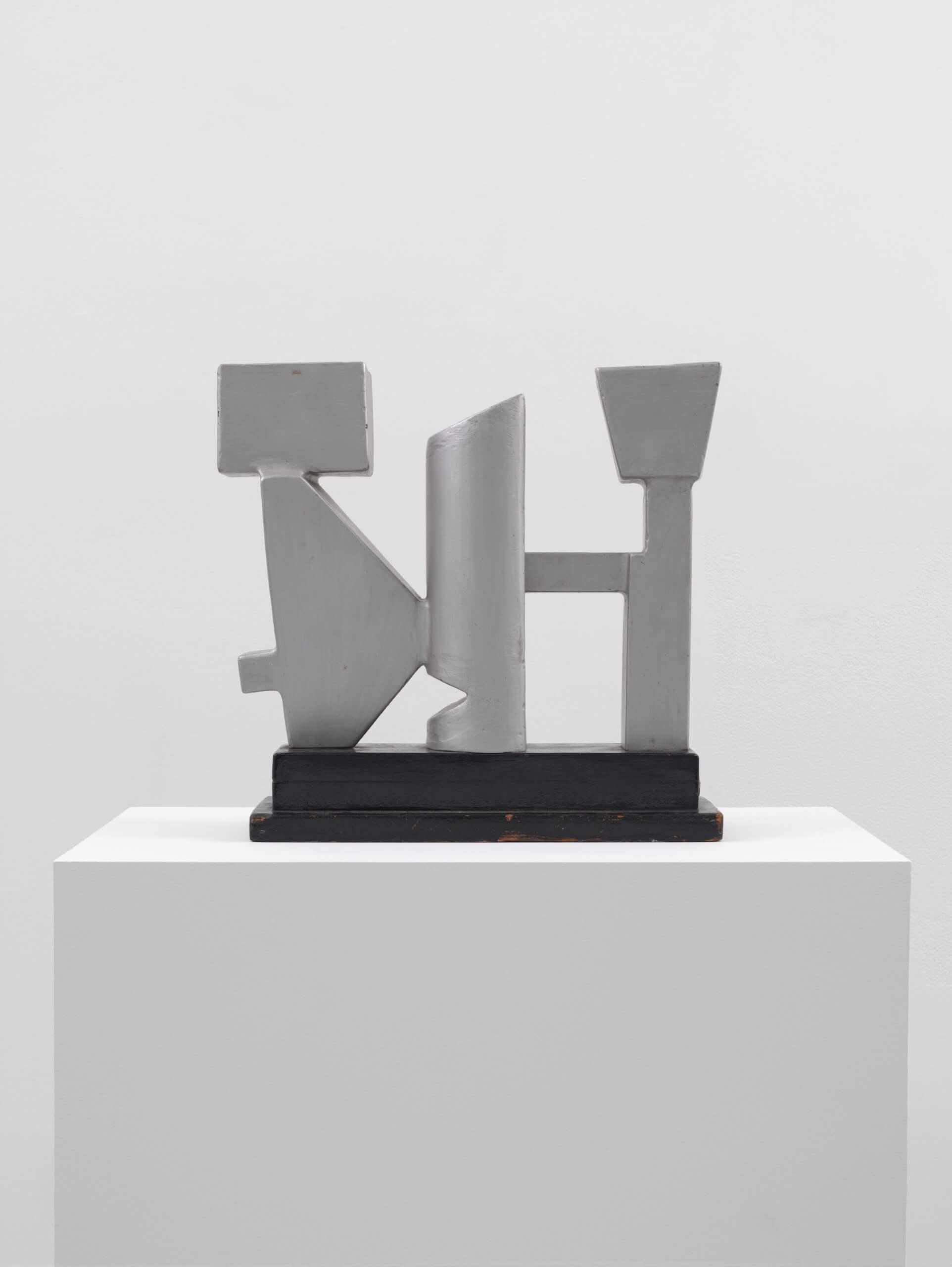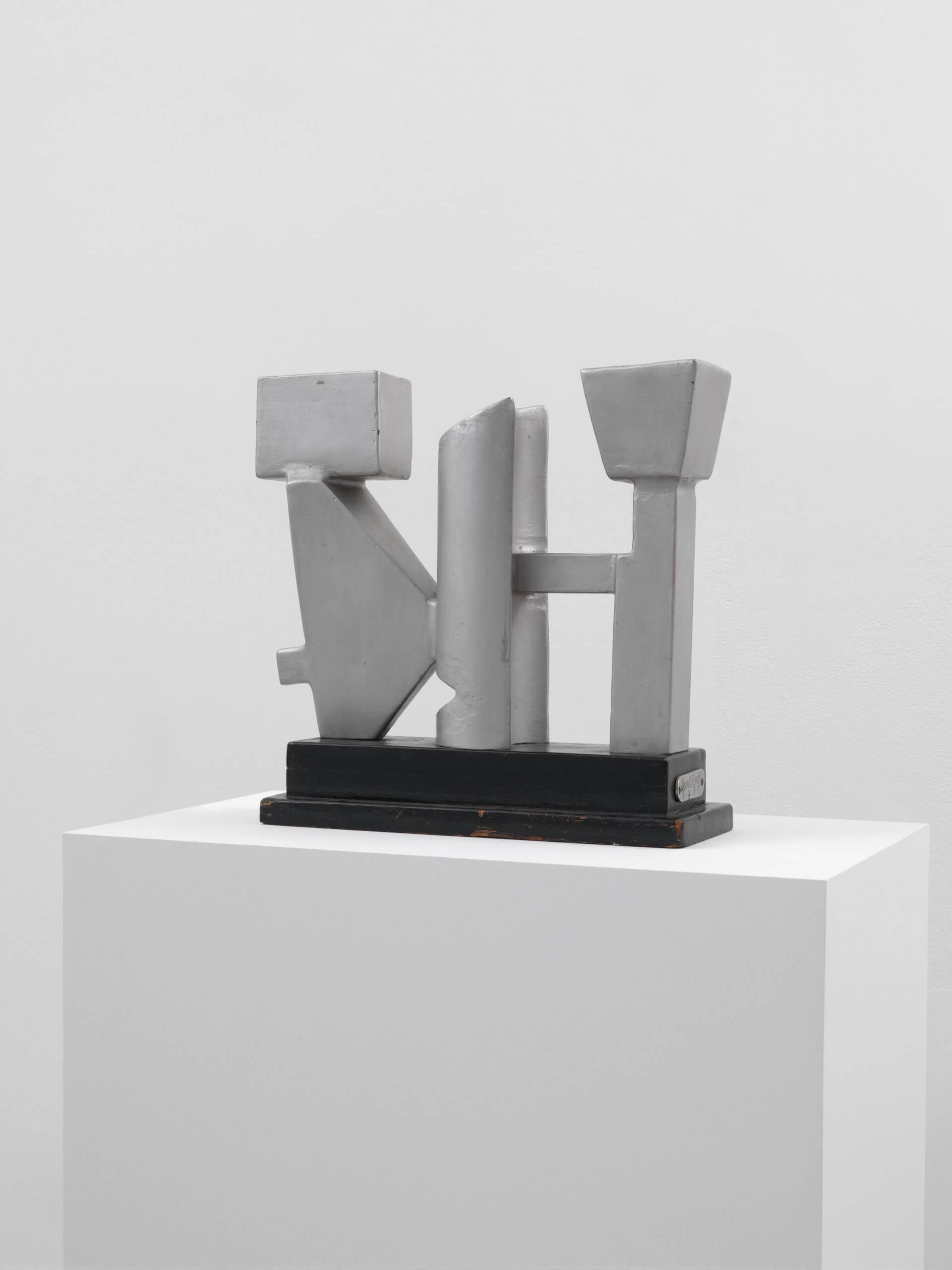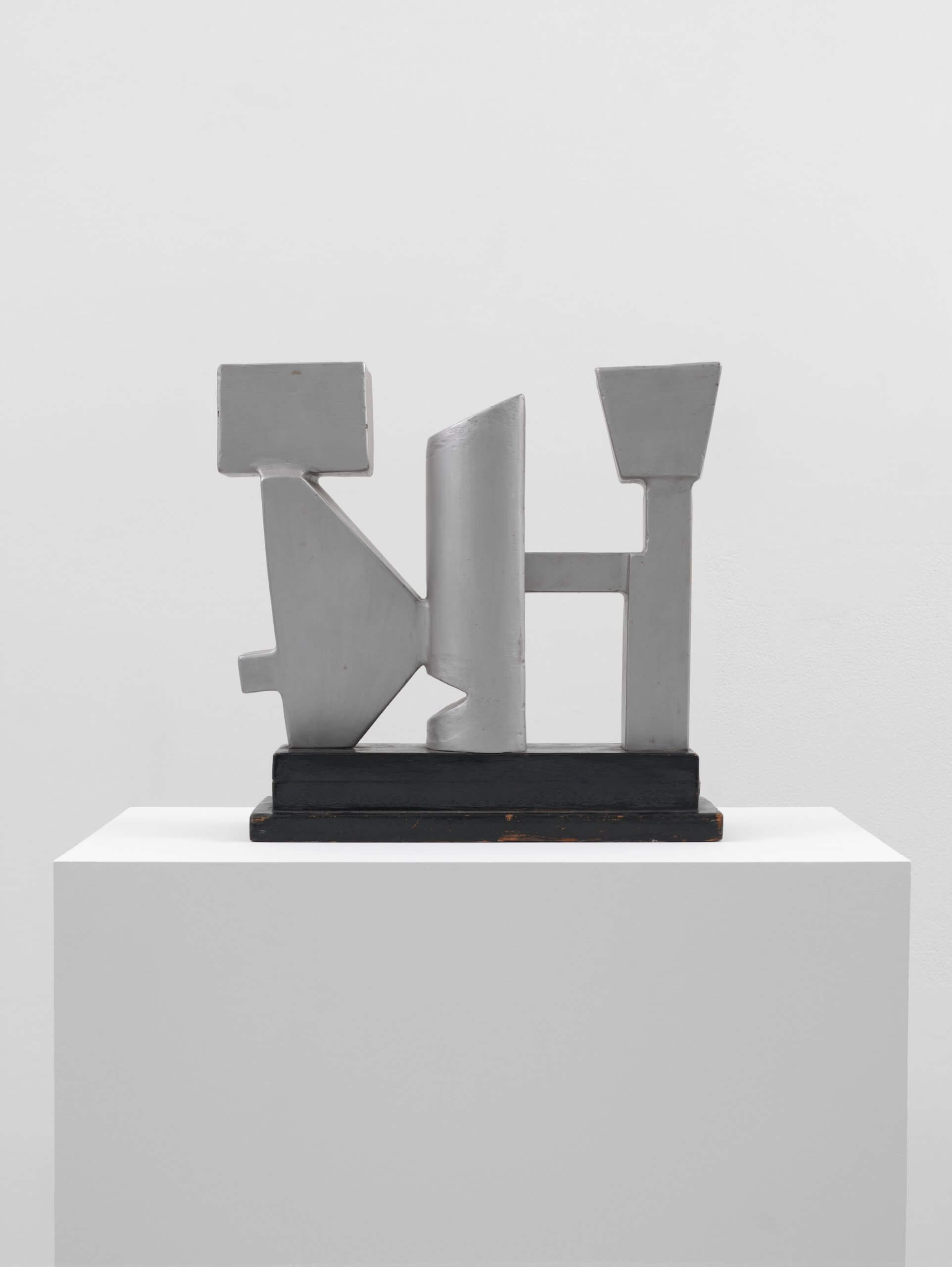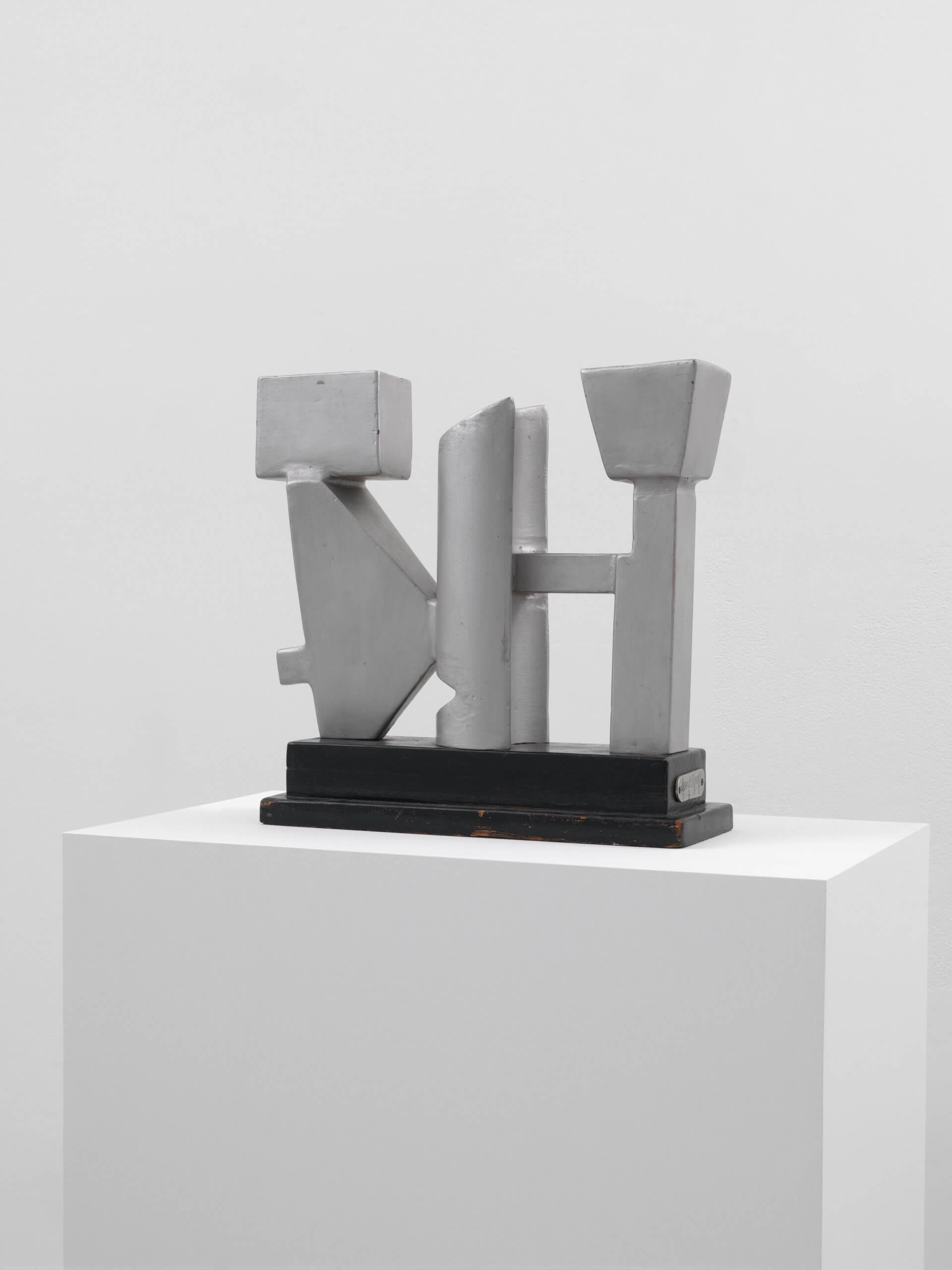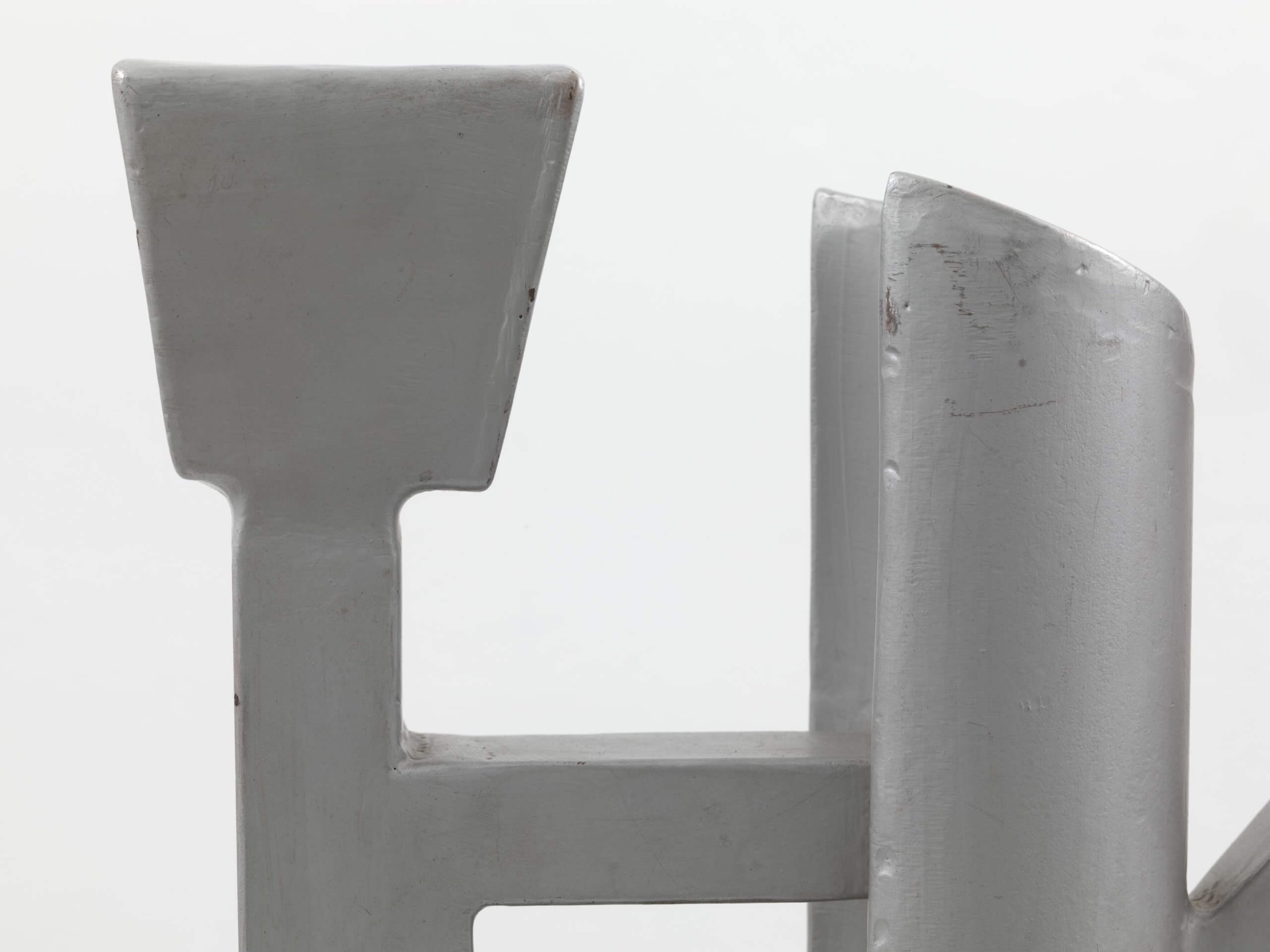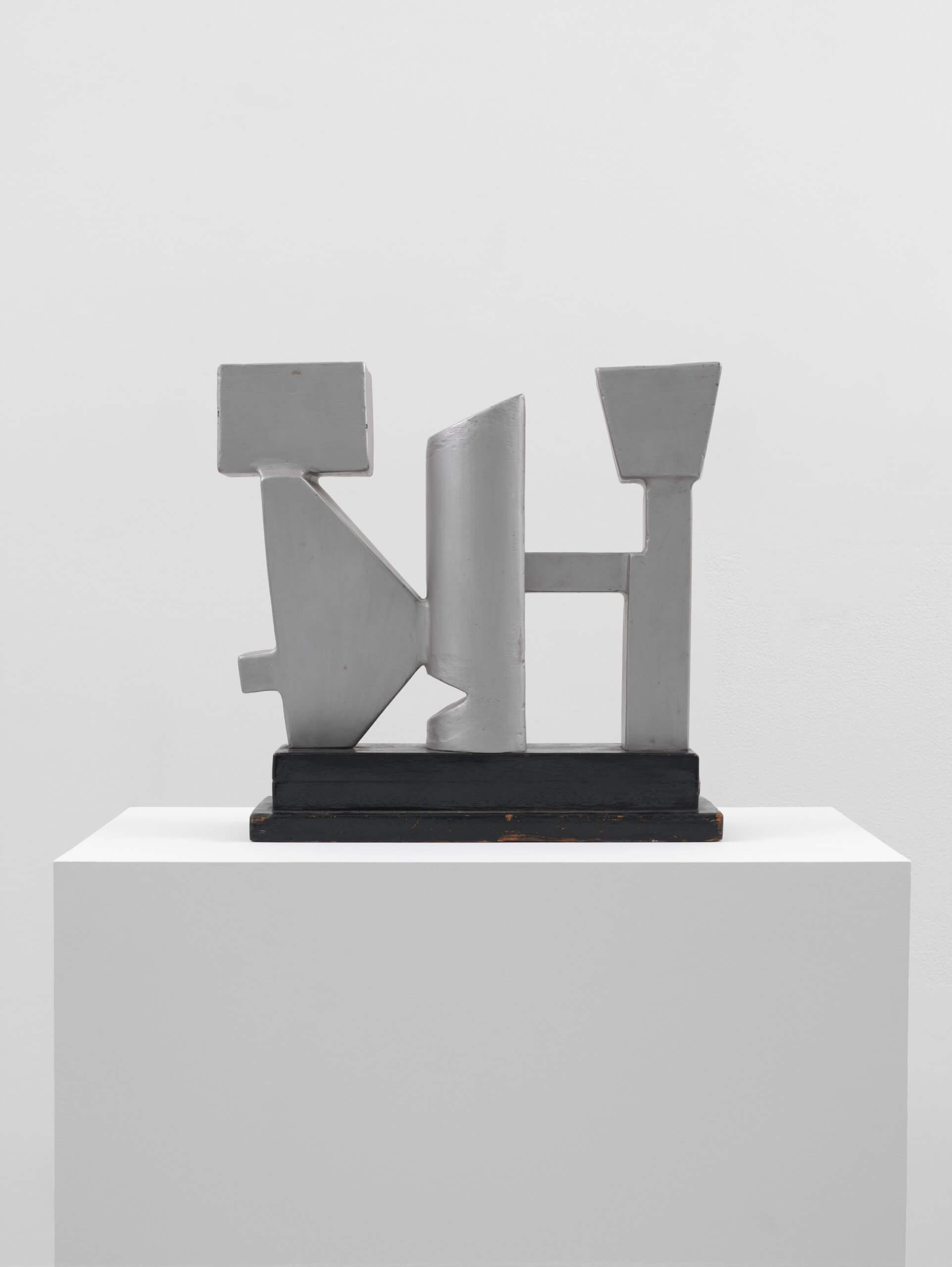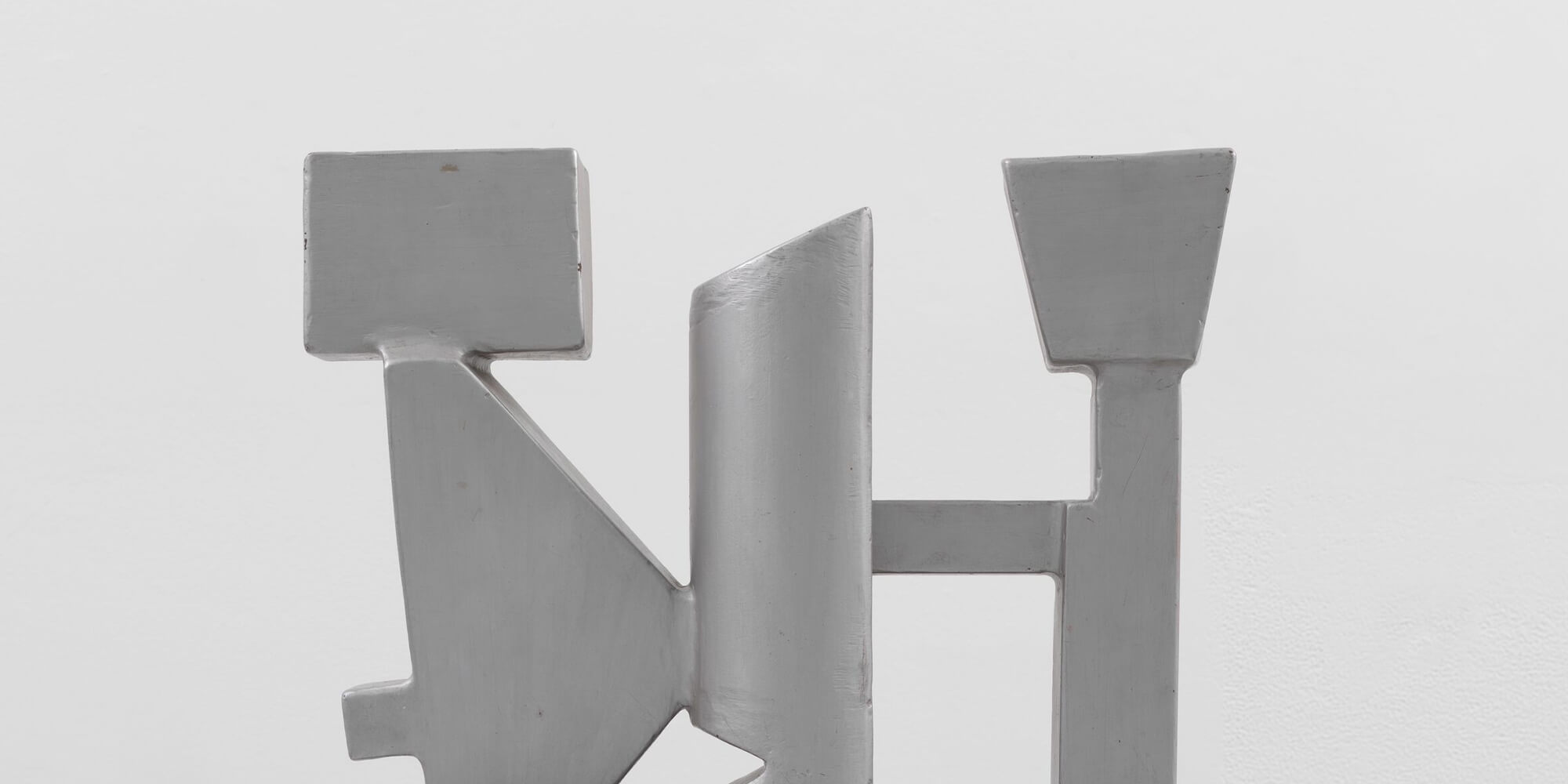
David Smith
Unity of Three Forms
Unity of Three Forms
1937 Steel, paint, wood base 37.8 x 39.7 x 13.3 cm / 14 ⅞ x 15 ⅝ x 5 ¼ in
Referred to as one of David Smith’s ‘first masterpieces’ by American art critic Hilton Kramer, ‘Unity of Three Forms’ (1937) marks a touch point of maturity in Smith’s early and experimental practice. [1] At this time, Smith’s sculptures ranged from bronze plaques to steel and aluminum constructions that often bravely straddled the gap between abstraction and figuration. Building on this, art historian Edward Fry noted that this sculpture was ‘one of the first works in which Smith espouse[d] a non-objective constructivist aesthetic,’ which is evidenced by its geometric yet dynamic form. [2]
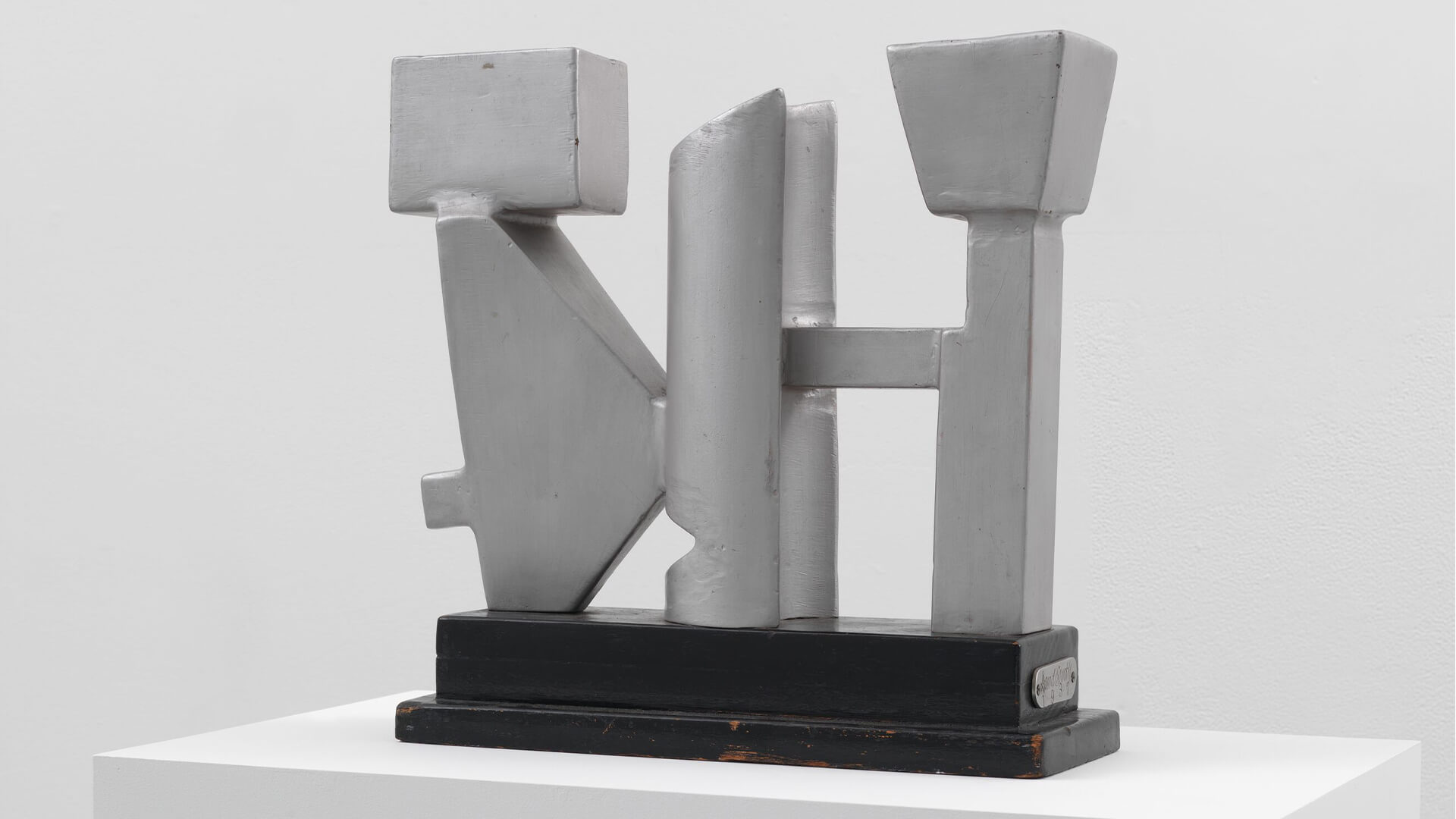
In ‘Unity of Three Forms,’ Smith manipulated steel into a captivating anthropomorphic arrangement. He placed three interconnected steel elements atop a wooden base, creating a striking contrast between natural and manufactured materials. From afar, the work appears to be resolutely abstract; however, closer inspection reveals three highly geometric and interconnected structures that materialise into human forms. This protean aspect of the work results in a playful, nuanced construction that encourages the viewer to fully explore the sculpture in the round through different points of view.
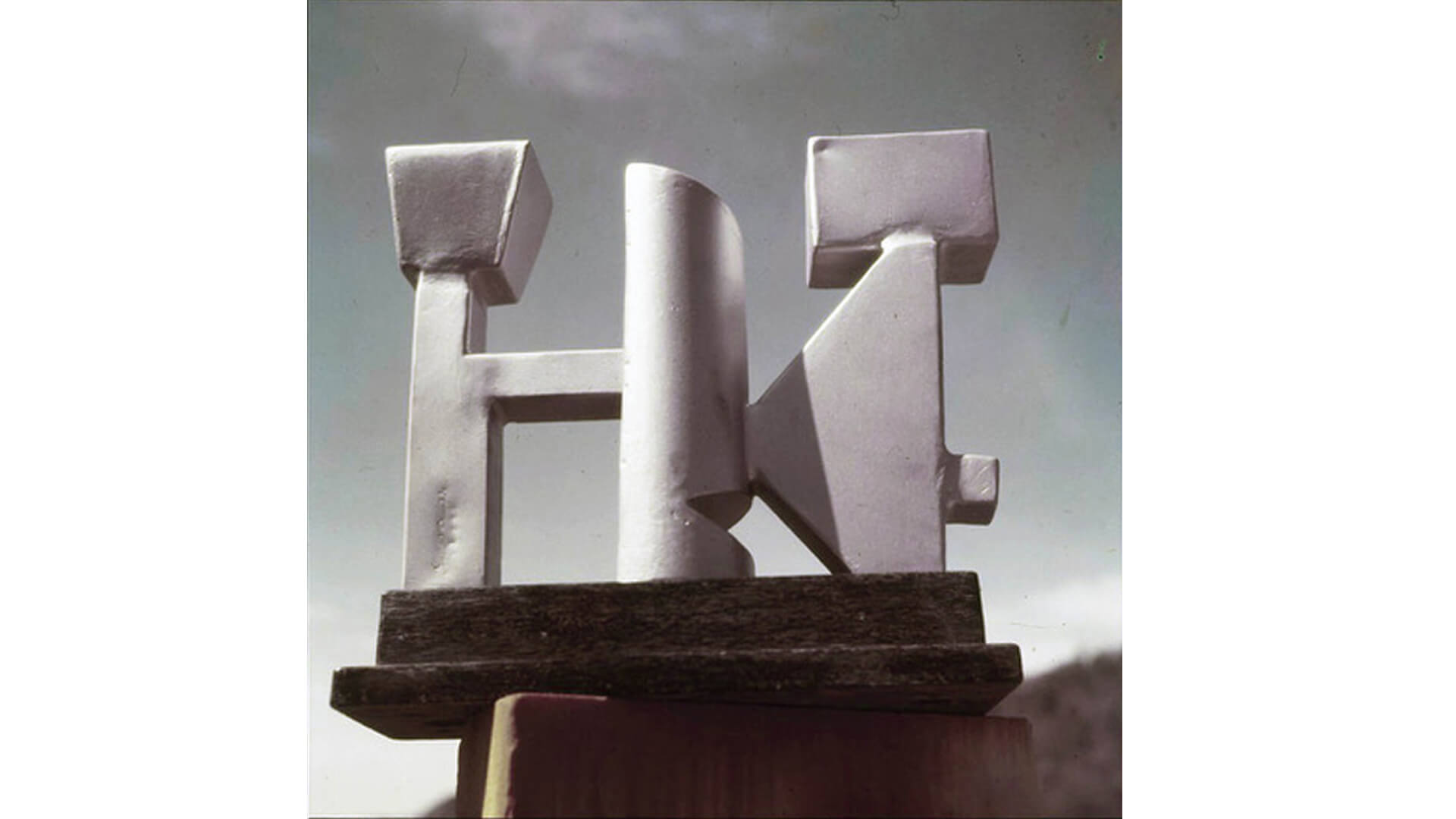
Smith’s choice to use steel in this sculpture was intentional and set the tone for the artist’s attitude toward the industrial material in works to come. In a letter from 1940, Smith expounded upon this artistic choice: ‘‘Unity of Three Forms’ is fabricated from steel because steel possesses the physical characteristics demanded by the aesthetic concept. Steel is a natural material for forming, uniting, and possessing a higher tensile strength. Steel imparts a certain aesthetic emotion to the formal relationship of the unified three volumes.’ [3]

Smith’s facility with welding allowed him to join industrial metals in new and exciting ways, as seen in ‘Unity of Three Forms.’ Smith learned to weld while working at an automobile assembly line in Decatur, Indiana, and then had the opportunity to improve his technical skills during World War II, working as a welder for the American Locomotive Company. As applied to Smith’s unique abstractions, the immediacy and vigour of this method gave rise to a pioneering genre of modern sculpture that was distinctly American.
‘David Smith’s constructions come logically out of the technology of modern America. [...] Relying on the tensile strength of modern metals and profiting by the lightness of hollow fabricated forms, Smith also explores the aesthetic realm of modern conceptions. Sculpture to the modern sculptor is not mass, weight, volume, bulk, but air, space, form enclosed in planes. [...] Essentially the search of Smith is to widen the field of sculpture by developing methods consonant with the times.’—Elizabeth McCausland [4]
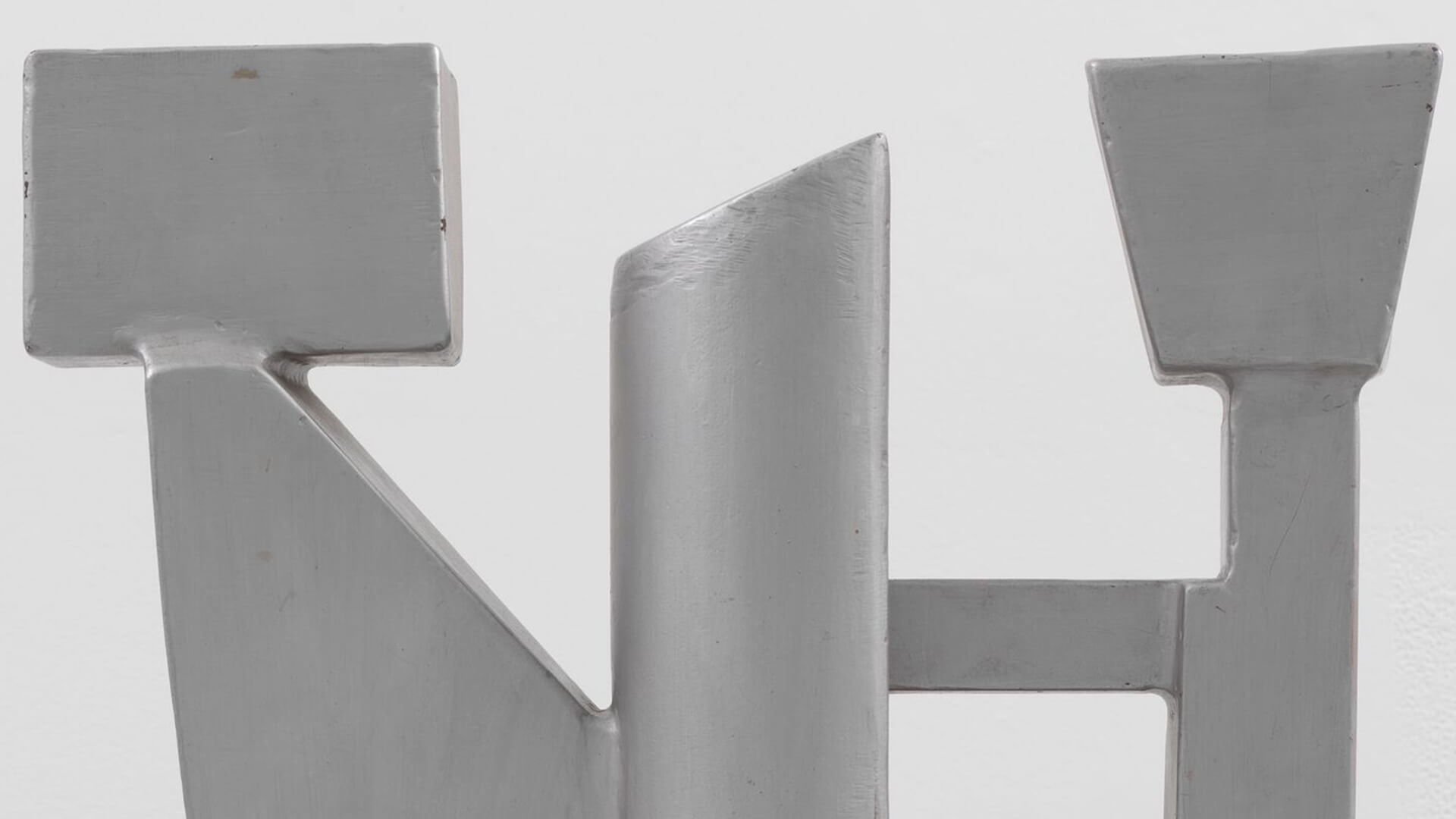
In many ways, ‘Unity of Three Forms’ is a marker of what is to come. Belying its size, the work demonstrates the dynamism of Smith’s late steel sculptures, such as the ‘personages’ that would come to dot the fields of his home at Bolton Landing, New York, and his celebrated Cubi series. Accordingly, this work captures Smith’s early experimentation and inquiry into how shape, material and form come together in space, which would ultimately position him among the most innovative and important artists of his time.

About the artist
One of the foremost artists of the 20th Century and the sculptor most closely linked to the abstract expressionist movement, David Smith is known for his use of industrial methods and materials, and the integration of open space into sculpture. Over a 33-year career, Smith greatly expanded the notion of what sculpture could be, questioning its relationship with the space it was created in and its final habitat; from the artist’s atelier and art foundry into the realms of industry and nature. Spanning pure abstraction and poetic figuration, Smith’s deeply humanist vision has inspired generations of sculptors for the decades since his death.
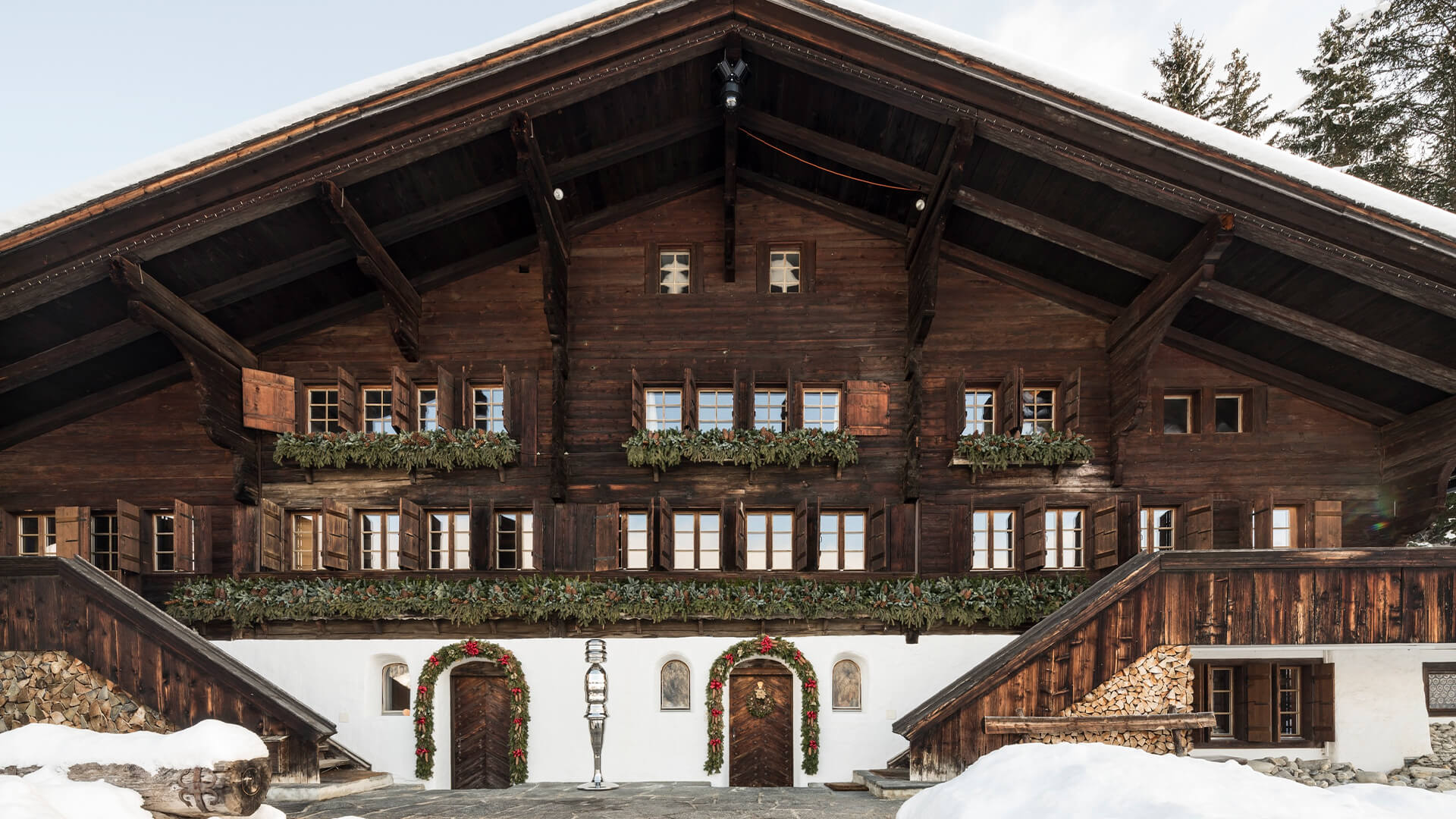
On view in Gstaad
‘Unity of Three Forms’ is on view by appointment at Vieux Chalet in Gstaad. ‘David Smith. Four Sculptures’ is currently on view at Hauser & Wirth Zurich, Bahnhofstrasse 1, through 6 April 2023. Please visit our location page or contact our team to learn more.
Images: David Smith, Unity of Three Forms, 1937. Photos: Christopher Burke David Smith, Unity of Three Forms, 1937, at Bolton Landing, ca. 1937 Portrait of David Smith in his New York Workshop, 1962 All © 2022 The Estate of David Smith / Licensed by VAGA at Artists Rights Society (ARS), NY Exterior of Vieux Chalet, Gstaad. Photo: Jon Etter
[1] Hilton Kramer, ‘The Sculpture of David Smith,’ in ‘The Age of the Avant-garde: 1956-1972,’ New Brunswick NJ: Transaction Publishers, 2009, n.p. [2] Edward Fry, ‘David Smith,’ New York NY: Solomon R. Guggenheim Foundation, 1969, p. 31. [3] David Smith quoted in Edward Fry, ‘David Smith,’ New York NY: Solomon R. Guggenheim Foundation, 1969, p. 31. [4] Elizabeth McCausland, ‘David Smith,’ Parnassus, vol 12, no. 4, April 1940, pp. 55–56.
